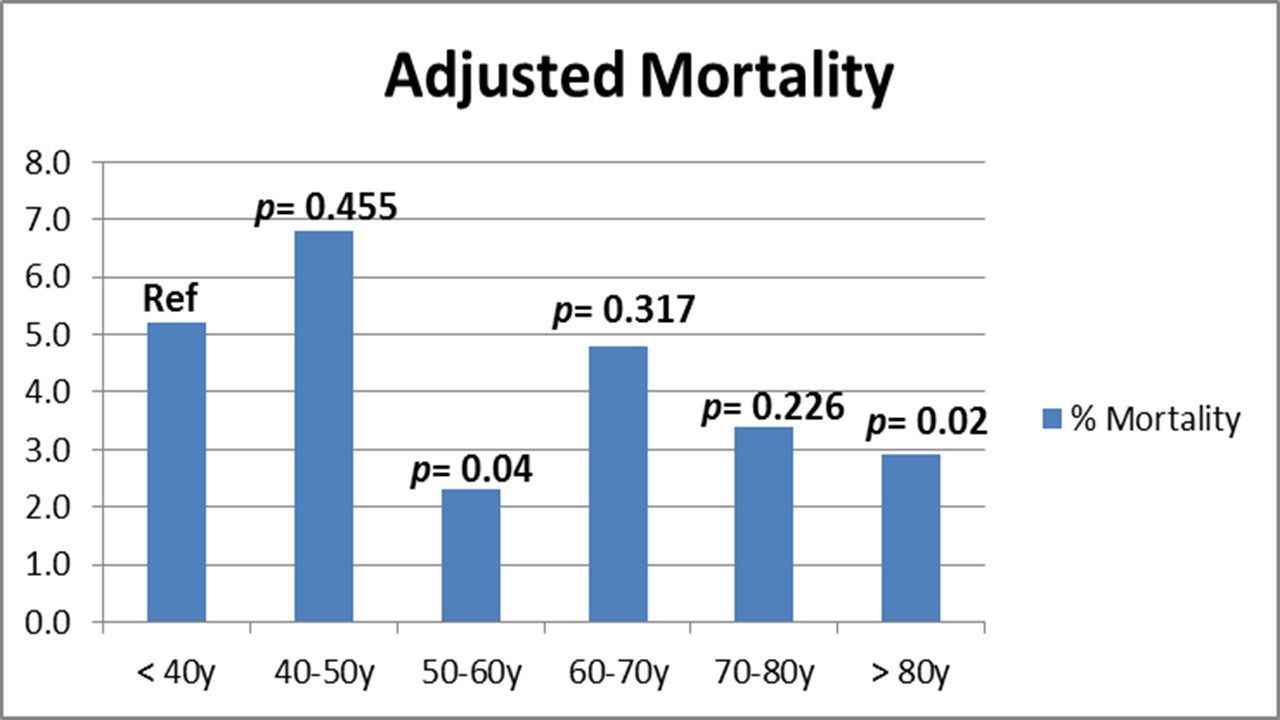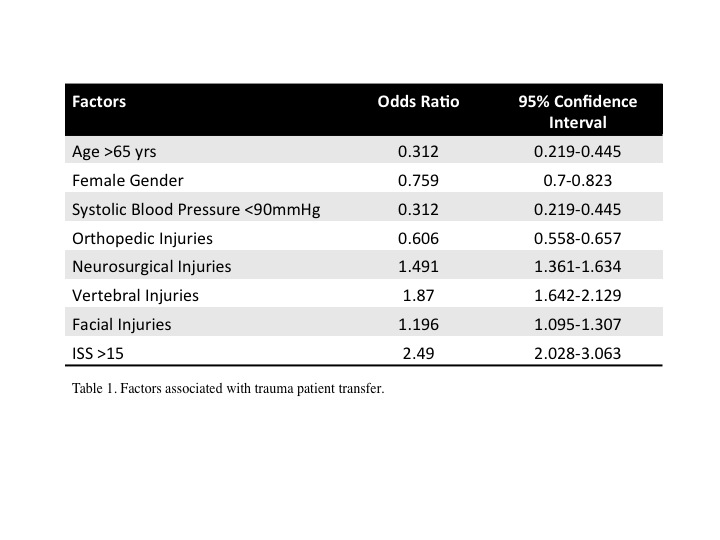P. Chang1, W. Chong1 1First Affiliated Hospital Of China Medical University,Emergency Department,Shenyang, LIAONING, China
Introduction: Traumatic coagulopathy usually follows severe traumatic brain injury (sTBI).The present study aimed to assess the relationship between coagulation parameters and outcomes in sTBI.
Methods: A total of 58 sTBI patients with Glasgow Coma Scale (GCS) <9, head Abbreviated Injury Scale (AIS)≥3 and all other body regions AIS<3 were recruited in this retrospective study. The age, gender, GCS score, pupil reaction, median line shifting and biochemical parameters including blood platelet (PLT), prothrombin time (PT), activated partial thromboplastin time (aPTT), fibrinogen (Fg) and blood glucose of sTBI patients on admission were retrieved from the medical record database. The patients were divided into good outcome group whose Glasgow Outcome Scale (GOS) was between 3 and 5 and poor outcome group whose GOS was between 1 to 2.In single-factor analysis, P≤0.15 was defined as statistical significance. The significance of parameters was determined with non-conditional multivariate Logistic regression analysis and those with P≤0.10 were used to generate receiver operating characteristic curves (ROCs).
Results: There were 41 males and 17 females ranging from 12 to 88 years old. The occurrence of TBI-associated coagulopathy is 31.03%. Compared with good outcome group, poor outcome group had significantly increased occurrence of abnormal pupil reaction[24(77.4%) vs 10(37.0%),P=0.002], occurrence of median line shifting[21(67.7%) vs 7(25.9%),P=0.001], blood glucose[mmol/L: 9.1(6.53-12.85)vs6.9(4.90-7.88),P=0.000], PT[second:14.5(13.18-16.53) vs 13.8(12.45-15.18),P=0.004],and aPTT[second:37.56(6.06) vs 34.32(7.98),P=0.087],lower GCS[6(1.75-3.32) vs 5(1.82-5.24),P=0.000], PLT[×109/L:167.33(48.8) vs 191.45(75.247),P=0.149]and Fg[g/L:2.55(1.75-3.32)vs2.98(1.82-5.24),P=0.021]. In addition, there was no significant difference of GCS between patients with coagulapothy and non-coagulopathy. The multivariate Logistic regression analysis demonstrated that pupil reaction (β=-3.650,OR=0.026,P=0.068), median line shifting (β=-1.990,OR=0.137,P=0.082), GCS (β=0.716,OR=0.195,P=0.081), PT (β=-1.200,OR=0.031,P=0.082), aPTT (β=0.293,OR=1.340,P=0.073), and blood glucose (β=-1.636,OR=0.195,P=0.078) were the independent risk factors for unfavorable outcome in patients with sTBI. Pairwise comparisons of the AUC were as follows: GCS versus PT, p = 0.516, blood glucose versus PT, p=0.227, GCS versus blood glucose, p=0.579, GCS versus aPTT, p=0.033?blood glucose versus aPTT?p=0.006, PT versus aPTT, p=0.142.
Conclusion: Prolonged PT and aPTT are the independent risk factors for unfavorable outcome in patients with sTBI. It suggests that there is a strong association between coagulopathy and an unfavorable outcome of sTBI.


